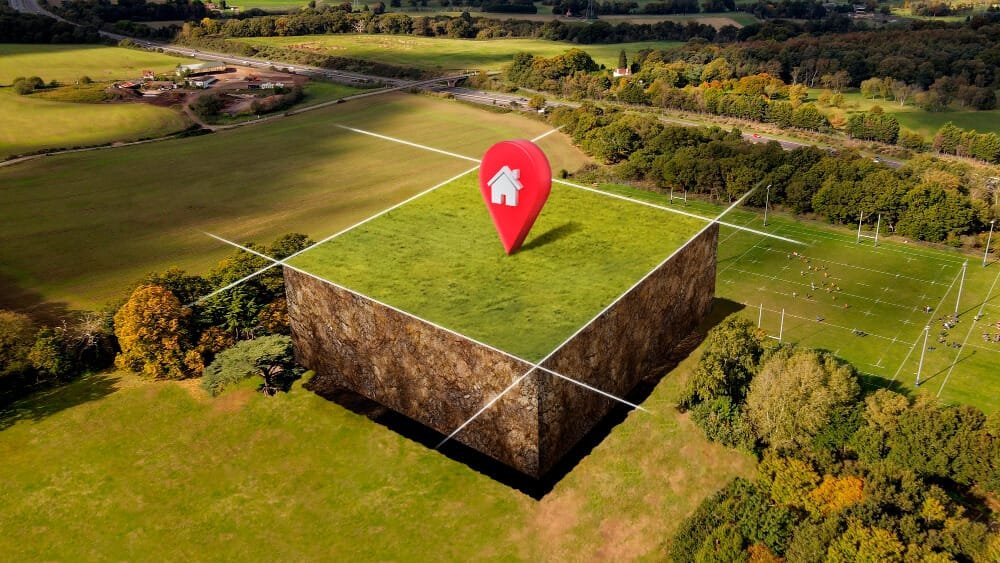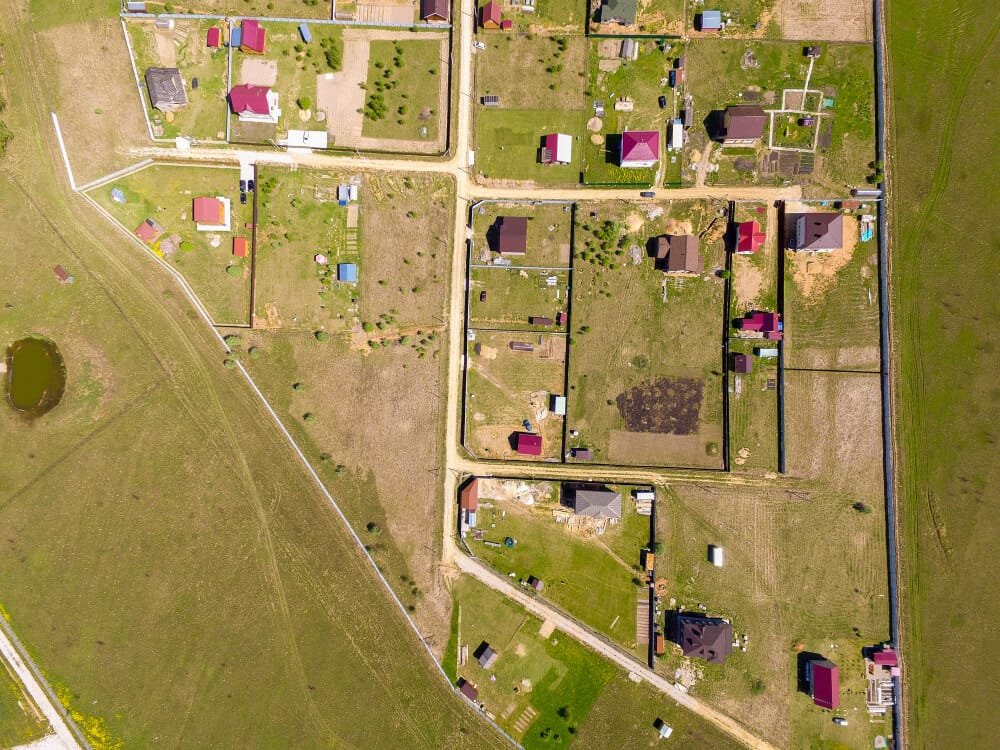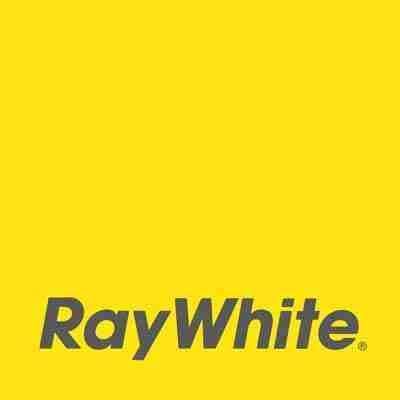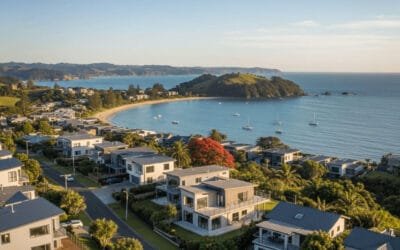Last Sunday evening, I received a call from a couple who’d fallen in love with a beautiful lifestyle block in Clevedon.
They’d already started planning their dream home and horse paddocks when they discovered a zoning restriction that would change everything.
It wasn’t the first time I’d seen hearts broken by zoning surprises – and it won’t be the last.
I’m Jay Singh, and having invested in rural properties myself and guided countless families through their lifestyle property journeys, I understand both the excitement and the vulnerability that comes with these decisions.
While urban buyers worry about building coverage and height restrictions, rural property buyers face a completely different set of zoning challenges that can make or break their property dreams.
Whether you’re looking to escape the city for a slice of Brooksby tranquillity, seeking that perfect equestrian property in Whitford, or considering subdividing your current rural holding, understanding land zoning isn’t just helpful – it’s essential.
My goal is to share the insights I’ve gathered from years of navigating these complexities with my clients, so you can approach your property journey with confidence.
Why Zoning Matters More in Rural Properties
That couple I mentioned earlier? They’d spent months driving through Clevedon on weekends, imagining their children playing in paddocks and their horses grazing peacefully.
What they didn’t realize was that their dream property sat in a Rural Production zone that severely limited residential development.
In my 24/7 availability approach, I’ve seen too many dreams derailed by zoning misunderstandings at 9 PM on a Sunday – moments when families finally sit down to really plan their future.
The reality is that rural zoning is fundamentally different from urban planning.
city buyers worry about whether they can build a deck or add a second story, rural property buyers face questions like: Can I keep horses? Can I run a home-based business? Can I subdivide this land for my children? Can I build a granny flat for aging parents?
In areas like Brooksby, Whitford, and the Hunua Ranges, zoning doesn’t just determine what you can build – it shapes your entire lifestyle.
I’ve walked properties with clients where a single zoning overlay meant the difference between their dream equestrian setup and a beautiful but restrictive rural holding.
Understanding these complexities upfront isn’t just about avoiding disappointment; it’s about recognizing opportunities.
The right zoning knowledge can help you identify properties with subdivision potential, understand which areas allow for the rural lifestyle you’re seeking, and make informed decisions about your property investment.
This is why I take the time to walk through zoning maps with every client – because your property journey deserves that level of care and attention.
Decoding Auckland’s Rural Zoning Categories

When I sit down with clients to discuss rural properties, I often see their eyes glaze over when we start talking about zoning categories.
But here’s the thing – understanding these zones is like having a roadmap to your property dreams.
Let me break down the key categories that affect our rural and lifestyle areas, in language that actually makes sense.
The Rural Urban Boundary (RUB)
Is probably the most crucial line on any zoning map around Clevedon and Whitford.
This invisible boundary determines whether your property has urban development potential or remains rural in perpetuity.
Having guided families through properties on both sides of this line, I’ve seen how a few hundred meters can mean the difference between a lifestyle block and a future subdivision opportunity.
Rural Residential zones
Are where many of my Brooksby and Hunua clients find their perfect balance.
These areas typically allow for larger homes, minor dwellings, and that rural feel while still permitting some flexibility for family growth.
I’ve walked through countless properties in these zones with clients who are seeking space for children to play and room for extended family.
Rural Production zones
Are designed for working farms and can be restrictive for residential development.
If you’re dreaming of that hobby farm in the Hunua Ranges, understanding these limitations upfront can save heartache later.
Special Purpose zones, particularly around coastal areas like Kawakawa Bay, come with their own unique considerations around building heights and environmental protection.
Having worked with families across all these zones, I can tell you that each category offers different opportunities – it’s about finding the right match for your lifestyle goals.
What Each Zone Means for Your Property Dreams
This is where the rubber meets the road – or should I say, where the zoning meets your family’s future.
When I walk properties with clients, zoning maps in hand, I’m not just looking at restrictions; I’m looking at possibilities.
Each zone tells a story about what life could look like on that land.
Rural Residential zones
Like many areas around Brooksby, you’re typically looking at the sweet spot for lifestyle living.
These zones usually allow for substantial homes, often with the possibility of adding a minor dwelling for extended family or rental income.
I’ve helped several families in these areas realize they could accommodate aging parents or create additional income streams they hadn’t initially considered.
Rural Production zones
Can be trickier but aren’t necessarily deal-breakers. If you’re dreaming of that authentic farm experience in the Hunua Ranges, these zones support agricultural activities but limit residential development.

The key is understanding what “agricultural” means – it might allow for that hobby farm setup, but probably won’t permit the large family compound you’re envisioning.
Clevedon’s equestrian-friendly variations
Are particularly interesting. Many properties here have specific provisions for horse-related activities, which can be a huge advantage if you’re seeking that rural lifestyle with your horses.
Similarly, Whitford’s coastal protection overlays mean building restrictions but also permanent protection of those stunning harbour views you’re paying for.
I walk every property with zoning maps in hand because it’s part of my patiently thorough approach.
Understanding what each zone means for your specific dreams isn’t just about following rules – it’s about recognizing the lifestyle opportunities that zoning can either support or limit.
The Hidden Zoning Factors That Can Make or Break Your Purchase
Here’s where many buyers get caught off guard – and where those kitchen table conversations I have with clients become so crucial.
Beyond the basic zoning categories, there are layers of additional considerations that can completely change what you can do with a property.
These are the conversations I have with clients over a coffee at their kitchen table, not rushed between appointments.
Overlay zones
Are like invisible blankets thrown over the main zoning, and they can be game-changers.
In Kawakawa Bay, for instance, coastal protection overlays might limit your building height or require special materials, but they also protect those million-dollar views forever.
I’ve seen clients initially frustrated by these restrictions later grateful that their investment is protected from future development.
Future development plans
Around your potential property can dramatically impact your lifestyle and investment.
When I research properties in areas like Brooksby or Whitford, I’m not just looking at current zoning – I’m investigating what Auckland Council has planned for the next decade.
That quiet rural road might be scheduled for widening, or that vacant land across the way might be earmarked for development.
Infrastructure limitations
Are often overlooked but absolutely critical. Water bore rights, septic system requirements, and power supply limitations can add tens of thousands to your development costs.
In many Hunua properties, for example, the dream of subdividing can be halted by inadequate water pressure or septic constraints that weren’t apparent during the initial property viewing.
Environmental and heritage protections add another layer of complexity, but they also preserve the character that drew you to these areas in the first place.
Navigating the Consent Process: A Buyer’s Roadmap
The consent process can feel overwhelming, but I like to think of it as a roadmap rather than a roadblock.
Having guided countless clients through resource consent applications, I’ve learned that preparation and the right professional relationships make all the difference.
This is where my network of planners, engineers, and council contacts I’ve built relationships with over the years becomes invaluable.
Resource consent is typically needed
When you’re planning to do something that goes beyond the basic permitted activities in your zone. In rural areas, this might include subdividing land, building additional dwellings, or establishing home-based businesses.
The timeline can vary dramatically – from a few months for straightforward applications to over a year for complex submissions involving multiple authorities.
Common pitfalls
I see clients encounter include underestimating the time required, not engaging with neighbours early in the process, and failing to understand the specific requirements of different council departments.
In areas like Clevedon or Whitford, where properties might straddle different jurisdictions or have unique environmental considerations, these complexities multiply.
Working with Auckland Council
Requires patience and persistence. I connect you with the right people from day one – my network includes planners, engineers, and council contacts I’ve built relationships with over years of helping families achieve their rural property dreams.
These aren’t just professional contacts; they’re people who understand the nuances of our local areas and can guide you through the process efficiently.
The key is starting this conversation early, ideally before you even make an offer.
Understanding the consent requirements upfront helps you make informed decisions about both timeline and budget for your property journey.
Making Informed Decisions: Your Zoning Checklist
After years of walking through properties with clients and watching their dreams either flourish or face unexpected hurdles, I’ve developed a practical approach to zoning due diligence.
Think of this as your pre-purchase conversation starter – the questions that can save you from costly surprises down the road.
Before you fall in love with any rural property, ask yourself: What do I actually want to do here? Can I keep horses? Build a workshop? Add a granny flat? Run a home-based business? These aren’t just nice-to-have features – they’re lifestyle requirements that zoning will either support or restrict.
During property viewings, I encourage clients to look beyond the current improvements. That beautiful Clevedon lifestyle block might have subdivision potential, or those Brooksby paddocks might be perfect for your equestrian dreams – but only if the zoning allows it.
I always bring current zoning maps to property viewings because seeing the boundaries and restrictions on paper can completely change how you evaluate a property’s potential.
Red flags to watch for include properties with multiple overlay zones, contested boundaries, or infrastructure limitations that aren’t immediately apparent.
In areas like Whitford or Kawakawa Bay, coastal protection zones can add months to any building consent process.
For current property owners considering selling, understanding your zoning advantages is crucial.
That subdivision potential or home-business permission could significantly increase your property’s appeal to the right buyers.
When I work with families looking to sell their rural properties, we identify these zoning benefits early and use them to attract buyers who’ll truly appreciate what the property offers.
The goal isn’t to become a zoning expert overnight – it’s to ask the right questions early enough to make informed decisions about your property journey.
Conclusion
Rural property zoning doesn’t have to be overwhelming when you have the right guidance and support.
Whether you’re dreaming of that perfect lifestyle block in Clevedon, considering the subdivision potential of your Brooksby property, or exploring equestrian opportunities in Whitford, understanding zoning is your foundation for making confident decisions.
What I’ve learned from years of walking properties with families is that the best outcomes happen when we take the time to understand not just what you want to buy or sell, but what you want your life to look like.
That’s why I’m committed to those unhurried kitchen table conversations where we can explore your property goals without the pressure of quick decisions.
Ready to explore your rural property options with confidence? I’d love to start a conversation about your specific situation – whether you’re looking to buy your first lifestyle property or considering selling your current rural holding.
Send me a message about a property you’re curious about, and I’ll provide an initial zoning overview with no strings attached.
After all, building relationships in our rural communities starts with genuine conversation, not just business transactions.Available whenever you need me,Jay Singh





